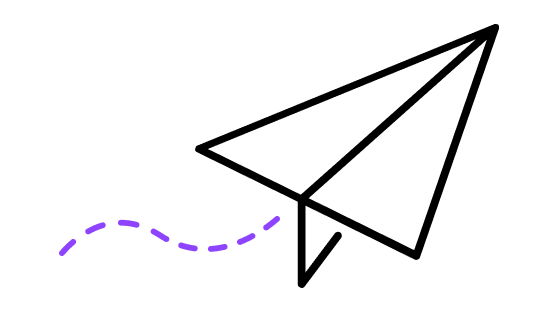Development approach
Conduct’s development process is underpinned by best-in-class project management methodologies and tools.






Services We Offer Australia-wide include:
Development approach
Backlogs are constantly evolving throughout a product’s lifecycle and are listed in priority order.
Backlog
The backlog is a list of everything that needs to be completed within the project. All user stories, tasks, improvements and bugs are housed within the backlog until they are scheduled to be tackled in a sprint.Backlogs are constantly evolving throughout a product’s lifecycle and are listed in priority order.
Development approach
For example:
As a [user role] I want to [functionality requested] so that [purpose and / or result].
becomes
As a user, I want to be able to login to my account so that I can view my previous transactions.
User stories
We populate the backlog with user stories to describe the agreed featureset before commencing production. User stories describe a feature from the user’s perspective. They are structured to describe who the user is, what they want and why they want it.For example:
As a [user role] I want to [functionality requested] so that [purpose and / or result].
becomes
As a user, I want to be able to login to my account so that I can view my previous transactions.
Development approach
Functional specification
A functional specification is a formal document used to detail a product’s intended capabilities. It serves as a ‘manual’ for developers, and bridges the gap between design and development. The functional specification describes what the product does. The technical specification describes how the proposed solution will work.
Development approach
During the technical specification phase, we’ll work together to determine the appropriate technology stack to ensure a fit for purpose solution.
We also identify any third party products, integrations or partnerships that require licensing and the associated costs.
Technical specification
A comprehensive technical specification describes how the proposed solution will work. It's a document outlining the complete technical solution, including APIs and system architecture. Technical specification documents describe in granular detail logic, toolset, business rules, data specification and schemas.During the technical specification phase, we’ll work together to determine the appropriate technology stack to ensure a fit for purpose solution.
We also identify any third party products, integrations or partnerships that require licensing and the associated costs.
Development approach
Sprints are generally one or two weeks, and don’t change once they have commenced. Before starting a sprint, we hold a sprint planning meeting to prepare and agree on the work to be undertaken during the sprint.
The estimated backlog of work is planned into a sprint based on priority level of each story and overall sprint goal.
Sprint
A sprint is a period of time dedicated to the production of pre-agreed features.Sprints are generally one or two weeks, and don’t change once they have commenced. Before starting a sprint, we hold a sprint planning meeting to prepare and agree on the work to be undertaken during the sprint.
The estimated backlog of work is planned into a sprint based on priority level of each story and overall sprint goal.
Development approach
Story points
The work effort of stories populated in the backlog is estimated using story points. Points are a way of estimating based on the level of effort and the risk involved in developing the story. Points are selected from: 0, 1, 2, 3, 5, 8, 13. Lower numbers indicate less risk and complexity, while higher numbers indicate more risk and complexity. Stories marked as 13 are too complex; they are broken into smaller stories to ensure no tasks with too many unknowns commence.
Development approach
Common ways to keep clients up to date include:
- Recorded video updates
- Video conference
- Online project diaries
- Confluence project pages
- Slack channels
- And of course… trusty email!
WIP
Work In Progress updates, or ‘WIP’ are an essential tool for communication to clients. At Conduct, we use a variety of methods to keep communication open dependant on your needs and preferences.Common ways to keep clients up to date include:
- Recorded video updates
- Video conference
- Online project diaries
- Confluence project pages
- Slack channels
- And of course… trusty email!
Development approach
Project burndown
‘Burndown’ is an Agile project management term to describe resource utilisation against outstanding estimated work effort. A burndown chart provides a picture of whether the project is tracking accurately to estimations. It is a useful tool to continuously validate where project components may be taking longer than expected, and identify the source of overrun. Conversely, it can identify where project estimation may have been pessimistic.
Development approach
Each person shares the following:
- Yesterday’s task/s
- Today’s task/s
- Blockers to completing today’s work
- How I’m feeling about today
Stand-up
We hold short stand-ups (5 - 15 minute meetings) every day. Daily stand-ups enable close monitoring of sprint progress. They allow teams to identify potential risks or issues early and to respond proactively.Each person shares the following:
- Yesterday’s task/s
- Today’s task/s
- Blockers to completing today’s work
- How I’m feeling about today
Development approach
Showcase
A release of the product in its current state is planned before the end of a sprint. Depending on the features completed, showcases may not be necessary. This will be confirmed with you during sprint planning. Clients are invited to review the release and provide feedback.
Development approach
Peer review
Commits through approved pull requests only. During development, our internal team follows a chain of command when committing new updates to the build. Once a commit has been made, code is reviewed and accepted/rejected before being merged into the master branch of the project.
Development approach
Automated testing
Third party penetration services automate known vulnerability checks. Virtual machines and deployable scripts, as well as CI (Continuous Integration) and DevOps tools provide mobile deployable development environments, using automated and repeatable procedures to create and update infrastructure.
Development approach
CI & CD
CI/CD or continuous integration, continuous delivery and continuous deployment helps our team turn out reliable and well-tested products quickly. We shoot for simplicity wherever possible. The purpose of CI/CD is to minimise manual testing. It enables a fast feedback loop, making it easy to update production deployments. Everyone in the team has visibility of the CI/CD pipeline. This level of transparency provides clear insight into the state of the build, exactly where test failures have occurred and makes contributors accountable.
Development approach
User acceptance testing
Formalised testing and User Acceptance Testing (UAT) is initiated when the build concludes. We take a methodical and wide ranging approach to quality assurance and testing. How we test depends on the needs of each project. Test cases are used as a transparent communication tool for your team to have confidence entering into pre- and post-UAT.


